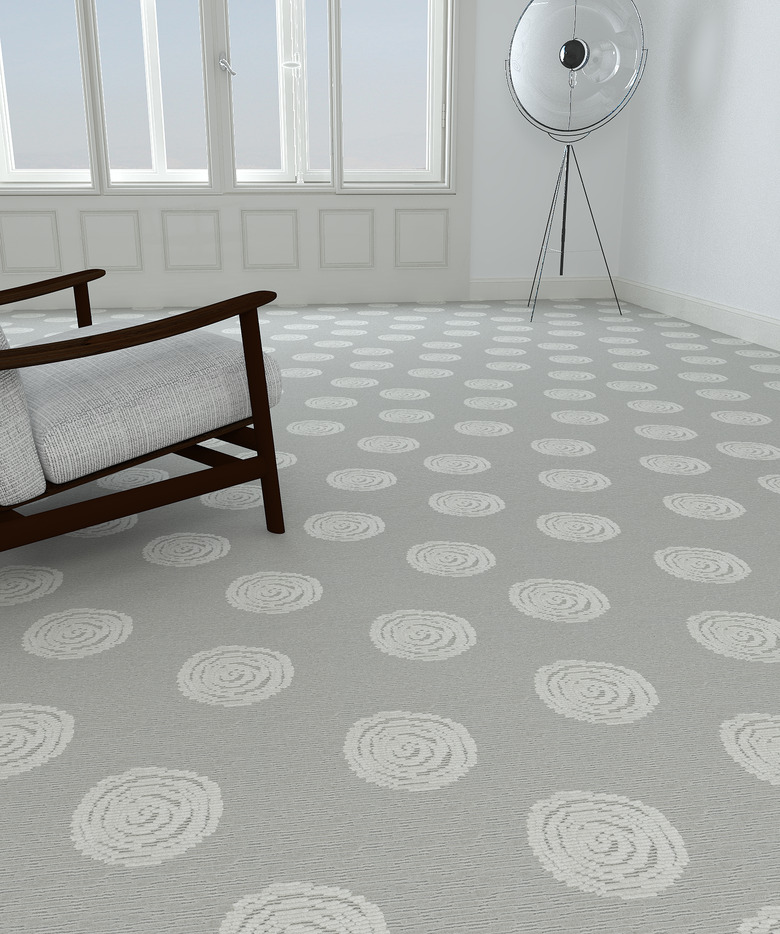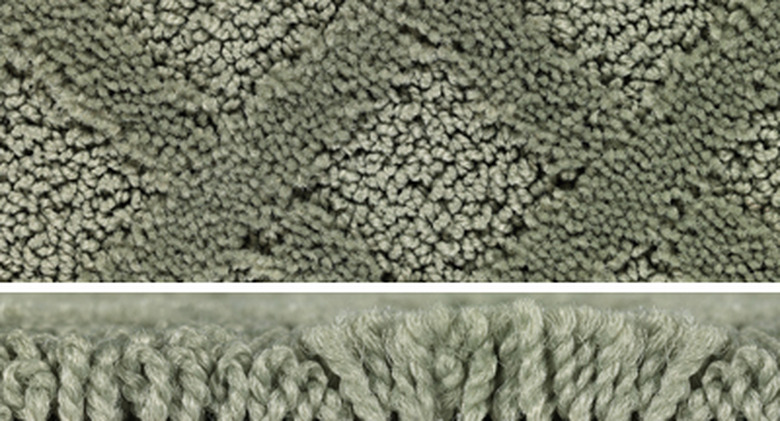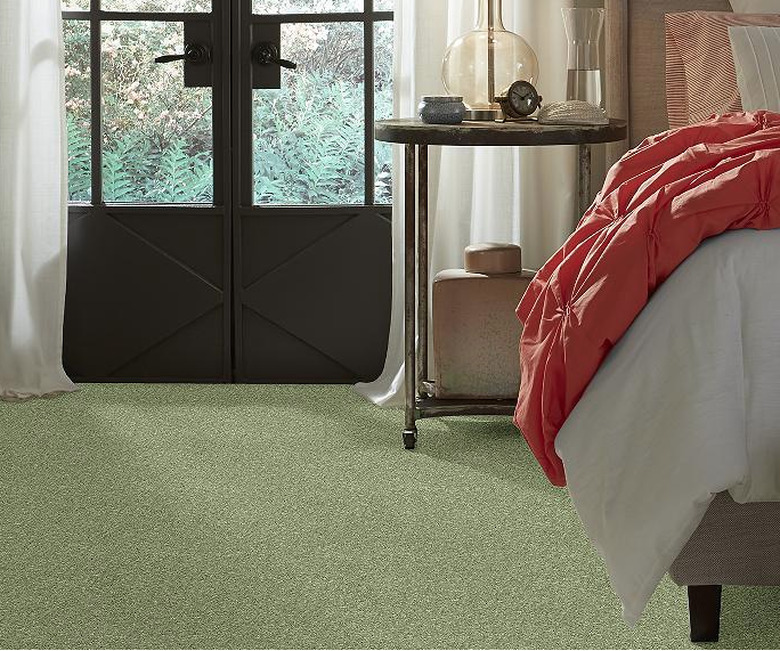A Homeowner's Guide To Carpeting
There are many reasons for having carpet. It softens hard surfaces, making it more comfortable to sit on the floor or for kids to play. It feels warm and comfortable underfoot, and when temperatures outside are cold, it slightly improves the R-value of a floor and helps a home retain heat. And there is the soundproofing advantage: your rooms won't sound like an echo chamber, because carpet cushions footsteps and absorbs sound. And perhaps most importantly, carpet adds style and color, and lends a cozy feeling to a home.
So you've decided you want carpeting for your home...You don't want to skimp on quality, but this is a significant expense so you want a good deal. What things do you need to know when you go shopping?
Basic Terms
Basic Terms
You'll come across these descriptors as you shop for carpeting. Here's what they mean:
- Fiber: The material used to make the yarns. Fiber is the most important factor where durability is concerned, although many other things also come into play.
- Pile: The length of the yarns, as well as the style or type. All carpet is either loop pile or cut pile.
- Density: How close together the fibers are mounted in the backing. This is measured in ounces per cubic yard. (If the manufacturer/retailer doesn't provide it, you can calculate it yourself: Multiply the face weight by 36; then divide that result by the pile height in inches.) The higher the density, the more durable the carpeting. Stay away from anything lower than 2,100; a density of 3,100 or higher is best.
- Weight: This is measured in ounces per square yard and it probably has the greatest impact on carpet cost. Face weight describes how much fiber is on the front of the carpet; total weight includes the backing, too. A face weight of 40 is best, but 30 to 40 is acceptable. Avoid any carpet less than 20.
- Twist: This pertains only to cut pile carpets, and it describes the number of times the fibers in a 1-inch-long strand twist on themselves. The higher the twist count, the stronger the fiber and the better its performance. A twist count of 5 is considered good.
- PAR rating: The industry's grading scale of Performance, Appearance, and Retention.
Pile Types
Pile Types
Pile is the style of the carpet—the way it's woven, constructed, and cut. All carpet fits into one of two categories: every carpet starts as a loop pile and it either stays that way, or the loop is trimmed so that the style becomes cut pile. Although pile affects the durability and ability of the carpet to repel stains and stand up to wear, it's in no way connected to the material out of which the carpet is made.
- Plush: Closely-packed yarns give plush carpet a smooth, luxurious finish. Because they're solid in color, plush carpets show dirt and imperfections more than do multicolored carpet. Vacuum cleaner streaks and footprints are also clearly visible on plush. Large rooms may require the use of two side-by-side pieces of carpet, which creates a seam where the two join—and plush carpet broadcasts these seams. The soft texture of a plush carpet doesn't bear up well to hard wear, but it's a nice, elegant carpet for formal rooms that don't get much use.
- Saxony: This style is less dense than plush, but has been heat-set so the fibers stand up straight. The tips of the fibers are clearly visible, giving the carpet a slightly bolder appearance.
- Textured plush: This is a plush style carpet with more than one color of yarn and fibers of uneven heights—a style disguises marks left by foot traffic and contributes a very soft, casual feel.
- Berber: This style has a loop pile with big and small tufts and is usually made from nylon, olefin, or wool. Berber carpeting doesn't show footprints or vacuuming marks, and stains have difficulty penetrating the tight weave. Berber is fairly inexpensive, and extremely durable. It's not a good choice for people with pets, however, because their claws will snag the fibers, which leads to unraveling. And stains that do manage to take hold are hard to remove because of the tight weave.
- Patterned: A combination of cut and loop pile—usually in the same color tones—creates textures and patterns. These can hide dirt and wear. But because of the loops, this style is not recommended for households with pets.
- Frieze: Tightly twisted fibers give frieze an uncombed appearance and exceptional durability, so it's good for high-traffic areas. Because the fibers go in different directions, footprints and vacuum tracks remain invisible. Sometimes called "new shag," this carpet doesn't actually have the long, shaggy appearance of disco-era carpeting.
- Shag: Ah, the 70s. Long, loosely spaced fibers create a carpet with a messy, informal, groovy look. Because the popularity of this style has waned, shag can be hard to source, and it's not always well made, so it can look worn fairly quickly. But if you want your room to look fun, well, now, we're talking!
Fiber Types
Fiber Types
Fibers have the deepest impact on carpet durability. They come in two broad categories: natural and synthetics. Each kind contributes unique characteristics to a carpet. Manufacturers often blend different fibers together in carpets in order to get the best attributes possible.
- Wool is a natural and hypoallergenic material that camouflages stains and repels oils, and it's very, very durable. It combines softness with springiness, resulting in the most comfortable carpeting. However, wool fades in the sun and holds moisture, making it prone to mildew. And it's a pricey carpet, making wool a luxury choice.
- Nylon is the most common carpet material because it's extremely durable and stain-resistant. It's also mildew-resistant and non-allergenic. This synthetic fades, however, and it's not particularly cushy underfoot—although you can get "soft nylon" carpet if that quality is important to you. Note that not all nylon fibers are created equal. Nylon costs more than other synthetics, and it's not eco-friendly.
- Olefin is the least expensive material used in carpeting, but it's not built to last. Also a synthetic, it attracts oils and quickly looks matted down in high-traffic areas. The low price tag may make it the perfect choice for a college-town rental unit that will probably have its carpeting replaced regularly.
- Polyester takes dye well, so polyester carpet comes in a wide range of vibrant, fade-resistant colors and is available in many textures. It feels soft underfoot and is quite stain-resistant. Polyester is touted as eco-friendly because it's made of recycled materials, but the carpet itself can't be recycled. Also known as PET polyester, it's budget-friendly and performs much like olefin—it soon looks bad in high-traffic areas, and it isn't very durable.
- Triexta, also known as Sorona and SmartStrand, is made from PTT polyester and has been around for almost a decade. It has exceptional stain resistance, making it great for families with kids and pets.
- Acrylic is a synthetic with many of the properties of wool. Its dull appearance helps to hide dirt, and it cleans easily and resists moths and mildew. It has low resilience, which means it crushes easily.
How Carpeting Is Ranked
How Carpeting Is Ranked
The industry rates carpet on a 1 to 5 scale for performance, appearance, and retention, known as the PAR rating—the higher the number, the more durable the carpet is and the better it retains its appearance. This is based on in-house factory testing, and it is admittedly a subjective testing procedure. The PAR rating may be of limited relevance because the test conditions don't necessarily resemble conditions in your home. Furthermore, since there's no industry-wide standard, it's not possible to compare carpets by different manufacturers. For that reason, good retailers and manufacturers provide lots of other information—fiber type, pile type, density, face weight, and more—to help you decide which carpet is best suited for your room or home.





